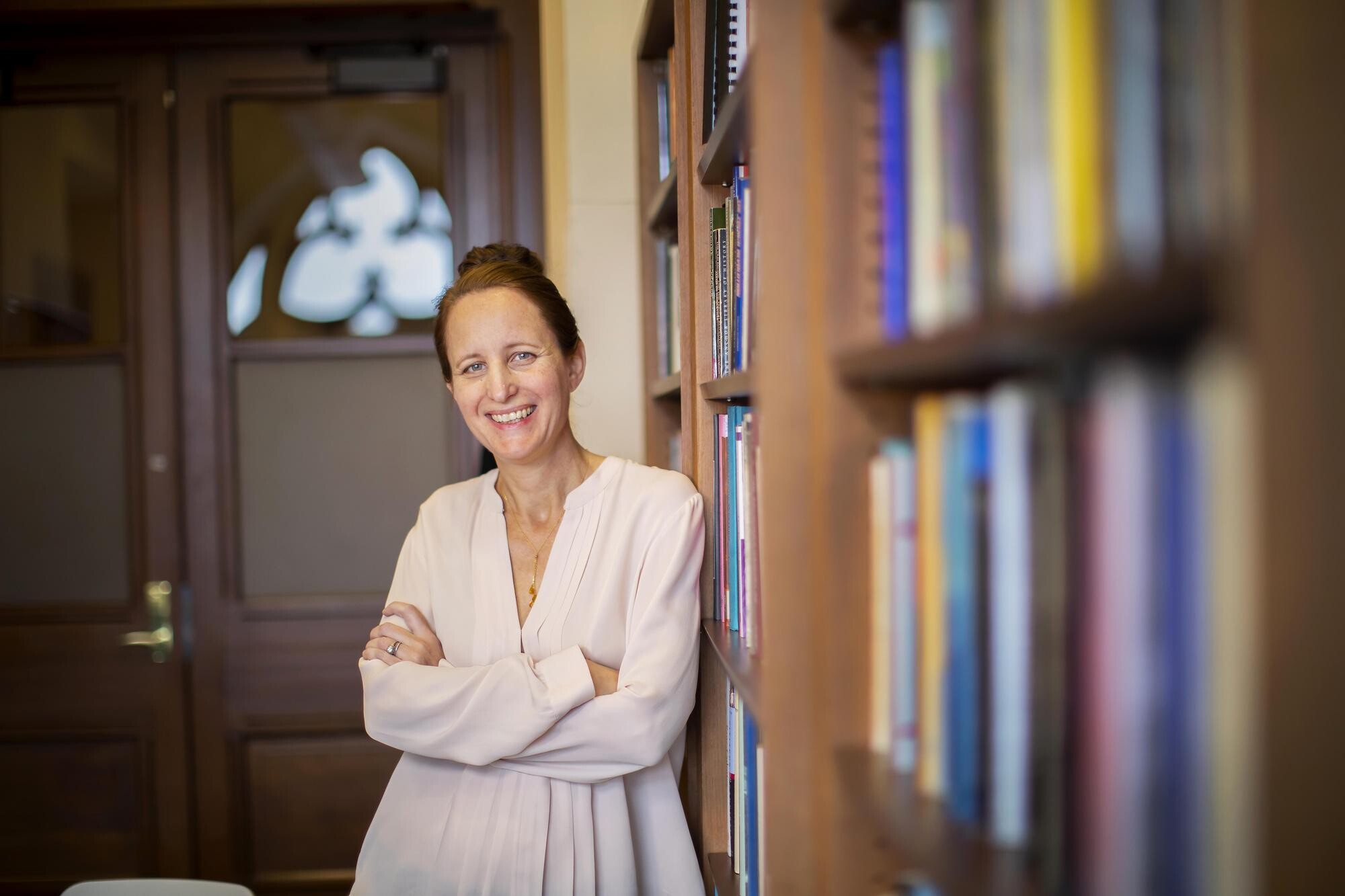
(From left) Doctoral student Hannah Yamagata, research assistant professor Kushol Gupta, and postdoctoral fellow Marshall Padilla holding 3D-printed models of nanoparticles.
(Image: Bella Ciervo)
4 min. read

To understand how people make choices, Sophia Rosenfeld didn’t just sort through the great intellectual texts on the topic. Instead, she turned to mundane items: food menus, dance cards, and ballots.
“When you are talking about this category of really obvious ideas, they come as much out of daily life and practices as they do out of philosophy,” she says. “Philosophy alone won’t answer our questions about why we think the ways we do.”
Rosenfeld is Penn’s Walter H. Annenberg Professor of History and chair of the Department of History. Her new book, “The Age of Choice: A History of Freedom in Modern Life” (Princeton University Press, 2025), has both a deep and wide span, covering themes rather than a strict chronology—consumer choice, intellectual choice, romantic choice, political choice and the sciences of choice among them.
Those ordinary artifacts and sources gave her insight into how choice has been organized and orchestrated throughout the last few hundred years of history, and examples of the rules that surround it.
But those everyday objects couldn’t answer all of her questions, either. “The hardest thing to find was the psychology of choice: What do people think they were doing when they interacted with these things? And for that, I had to look elsewhere,” she says.
So, the historian turned her attention especially to novels, which are in many ways fundamentally about choice.
The modern novel is “full of scenes of choice … things like elections and ballrooms and shop floors,” Rosenfeld says. “And so they gave me a little bit of a clue about how to put together, on the one hand, the material, and on the other, the more psychological.”
Rosenfeld says she likes to work on topics that are so fundamental and ubiquitous that they don’t register in many minds, topics such as common sense itself, the subject of a prior book. “We don’t frequently notice that they have a history,” she says. “In fact, we rarely talk about them at all. They’re just things we think or do.”
Choice itself, she says, is similarly not often a category for historical analysis, even though choice undergirds much of the modern world. “It’s fundamental to democracy and human rights and also to consumer culture, and in fact it’s sometimes thought to be their meeting ground. It’s what we think of as freedom today,” she says. “And so I wondered: How did we get to this point? But also: Is it a good thing or a bad thing?”
She says choice plays a key role not just in society, but in the highly individualized stories that people tell about themselves—the “authors of our own destiny” approach.
“I chose to study this, I chose to go into this profession, I chose to move to X location—we largely tell the stories of our lives that way,” Rosenfeld says. “That’s the kind of mode into which we’ve reshaped our existences, and we do it so naturally that it isn’t something I think we’re conscious of. … It’s not just that we make more choices today, it’s also that we think of choice quite differently than did people in the past.”
Even divorce fits this pattern: “It’s a way to give yourself second chances, to make new choices in the future,” Rosenfeld says.
While a prevailing idea in society is that the more choices we have, the freer we are, our choices are often “bounded” in different ways, Rosenfeld says. “We don’t want to have an unlimited menu of possibilities,” she says. “You don’t want 6,000 different pairs of shoes when you go to buy one. Nobody could navigate that. … It’s not like freedom of choice means the total deregulation of everything. In fact, you need a lot of regulation for choice to work.”
The choices of women played an important role in Rosenfeld’s research, more than she thought they would at first. She says women were some of the first “modern choosers” in the context of making preference-based consumer purchases, but they were also long shut out of larger, more impactful ones. “So women are historically in the odd position of being both in the advance, especially when it came to commerce, and of being excluded from a lot of other kinds of choice-making,” Rosenfeld says.
That partly changed with the rise of feminism and, eventually, the suffrage movement. “Women were always sort of fighting against the idea that they were weak and flighty choosers and trying instead to make the case that they not only aspired to more choice but were already good at it,” she says.
Rosenfeld says she hopes the book helps readers understand the idea of choice and even makes them a little more self-conscious about their own choices by asking questions such as: “What is this freedom? When do I want it? When don’t I want it? What are some of the ways in which it enables me? What are some of the ways in which it creates anxieties or stresses or disenfranchises others?” These aren’t questions we often ask but the age of freedom introduces, she says.

(From left) Doctoral student Hannah Yamagata, research assistant professor Kushol Gupta, and postdoctoral fellow Marshall Padilla holding 3D-printed models of nanoparticles.
(Image: Bella Ciervo)

Jin Liu, Penn’s newest economics faculty member, specializes in international trade.
nocred

nocred

nocred